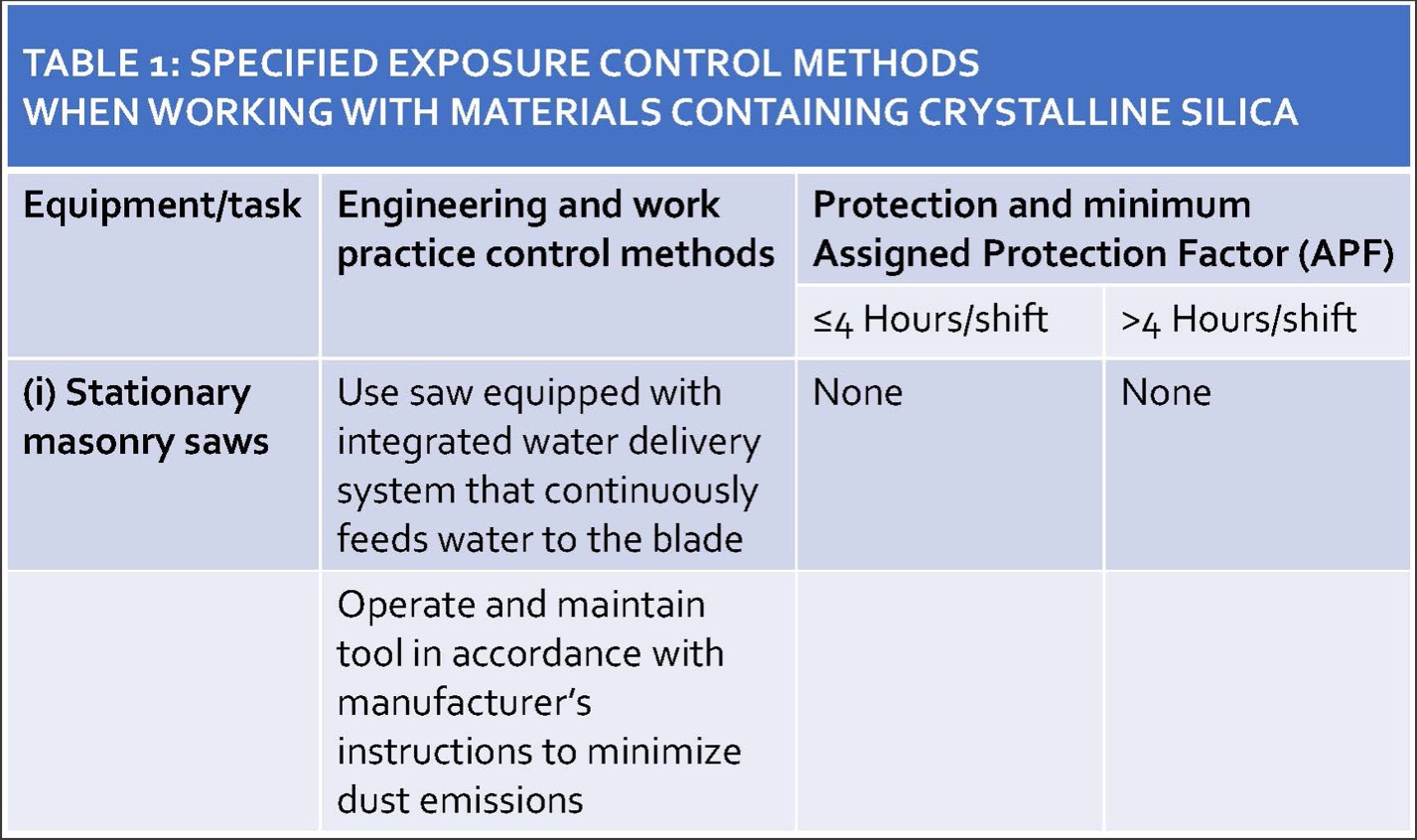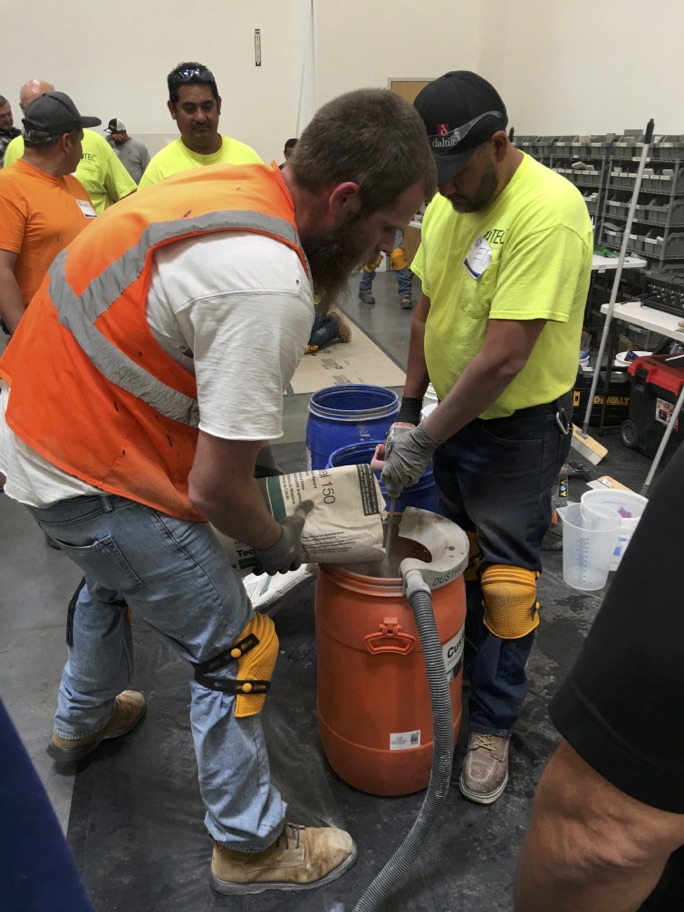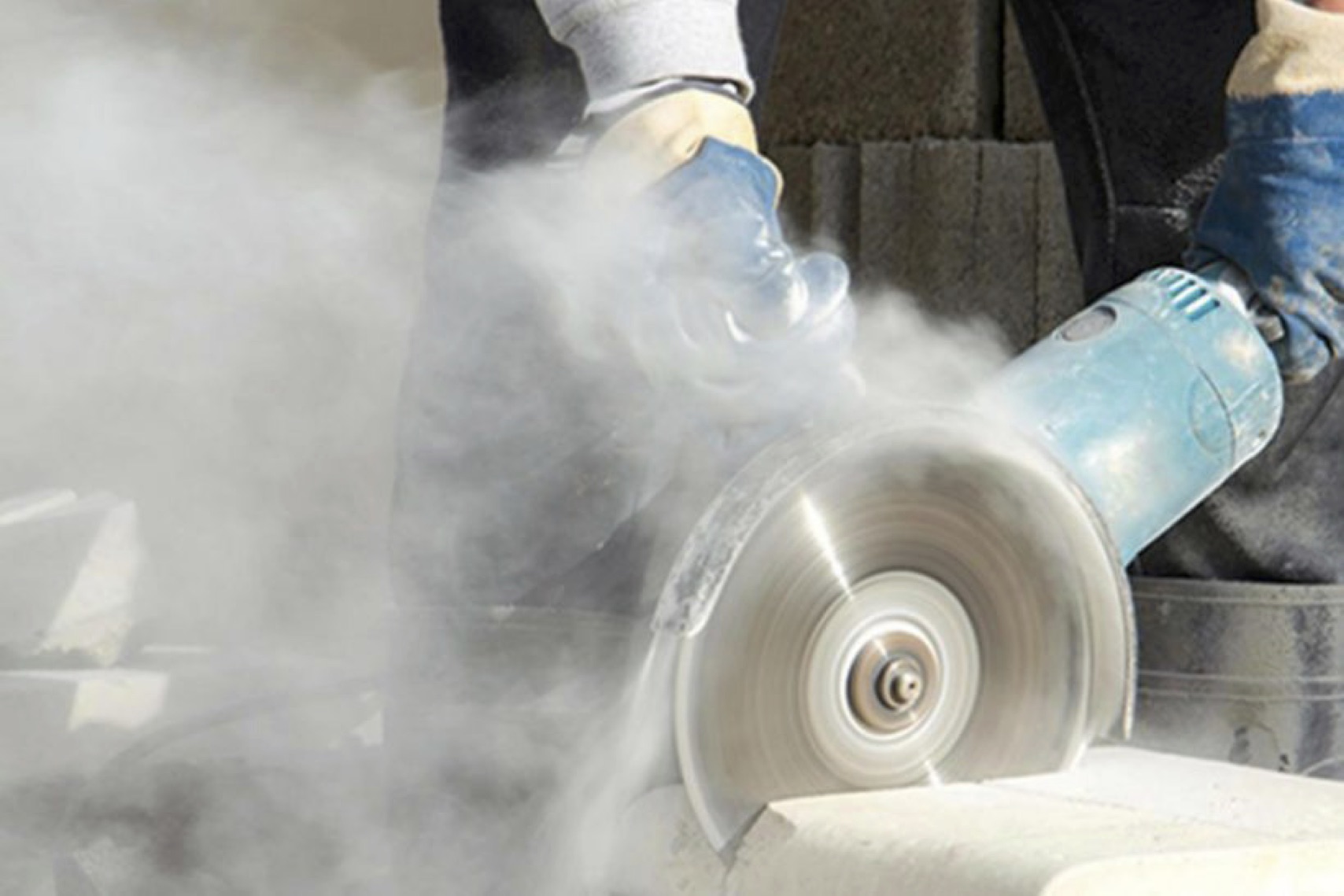Revising Table 1 – now is the time to act
By Tile Council of North America staff
The Occupational Safety and Health Administration (OSHA) has announced plans to reopen the Occupational Exposure to Respirable Crystalline Silica ruling, primarily focused on possible changes to Table 1 of the silica standard. Table 1 is a listing of construction tasks with engineering controls, work practices, and possible respiratory protection that provides compliance certainty for those tasks. Currently it’s comprised of only 18 common construction operations, each with their own limitations. The list can be found at https://www.osha.gov/silica/Table1sect1926.1153.pdf or https://bit.ly/2ZaS0zg.
The notice to reopen the rule is currently at the Office of Management and Budget (OMB) for review before publication in the Federal Register. A 60- to 90-day comment period is expected once the notice is published. To take advantage of this unique opportunity, companies wanting changes to Table 1 must organize quickly and assemble data to support their requests.
Table 1
If a task is listed on Table 1, and the employer ensures that all requirements are followed, the employer does not have to conduct an exposure assessment for that operation. However, the list is far from exhaustive and includes limitations. For example:
- Several tasks, including cutting fiber-cement backer boards, are limited to only being conducted outdoors. This excludes not only performing the task indoors, but also in “enclosed areas,” which would include garages and many other partially enclosed locations.
- Many tasks include only one type of engineering control, often water-based. In some instances, vacuum-based controls are currently available but have not been included in Table 1.
- Some tasks limit the size of the blades that can be used.
In addition, there are some common activities that are not included in Table 1, such as:
- Mixing mortar, self-leveling underlayment (SLU), and other silica-containing materials using a variety of powered equipment.
- Shot blasting for floor preparation.

Opportunity for changes to table 1
After the initial announcement to reopen the Occupational Exposure to Respirable Crystalline Silica ruling in late 2018, Tile Council of North America (TCNA) staff met with OSHA to discuss the details of this upcoming action. TCNA’s understanding is that OSHA will be looking for at least two types of changes to Table 1:
- New additions. Submittals can include proposed categories, engineering controls, and PPE requirements (for example, if supported by data, mortar mixing with a 300-rpm drill equipped with a mixing blade, adding water before powder, and without PPE if under four hours per day).
- Enhanced equipment requirements. Industry can propose new engineering control requirements for tasks already on Table 1, which could change the PPE requirements. For example:
- With air filtration or water flow rates set above the current thresholds, perhaps PPE requirements could be less restrictive.
- Some tasks are currently limited to outdoor use only. With data from indoor operations, it may be possible to show that operations conducted indoors, or in enclosed areas, are also below the action level of the rule for certain tasks.


Beyond adding tasks to Table 1, companies can also use this opportunity to clarify issues they identified through efforts to implement the rule. For example, some companies have raised the question of how to differentiate between a grinder and a saw, especially when the same piece of equipment can be used in both capacities. Grinders and saws are currently treated differently on Table 1. While presumably the difference lies in whether a saw blade or grinding wheel is attached, with Table 1 being revised, that can be clarified by OSHA with no ambiguity for the OSHA inspector and installation company.


Immediate benefits
The process to potentially change Table 1 will be lengthy, with revised standards likely not out for at least a year. However, data provided to OSHA for changes to Table 1 may be immediately useful as “credible data” when assessing exposure to employees, which is required by the standard for all tasks not following Table 1 requirements.
Prepare now
The window to revise Table 1 is relatively narrow. Given OSHA’s schedule, we expect the notice requesting data to be published this summer, with the 60- to 90-day comment period extending into early fall. Companies that desire changes to Table 1 should prepare now by formulating their request and evaluating their data. If additional data is needed to fully characterize exposure, the effect of controls, or required PPE, companies need to identify that right away to collect the required information.
More Information
For more information on the OSHA silica standard, a convenient list of frequently asked questions is available at: https://www.osha.gov/dsg/topics/silicacrystalline/SilicaConstructionFAQs.pdf or https://bit.ly/2XFAcfe.
Important note
This article is to help raise awareness of what TCNA staff believe are important issues for the reader. Please understand, however, that these issues often involve complex regulatory issues that are not easily summarized and that may vary in application based on specific facts and circumstances. Therefore, this article is offered as is, for informational purposes only, and readers should not rely on it for legal or other professional advice. Readers should conduct their own review and seek appropriate professional advice for their specific
circumstances.








